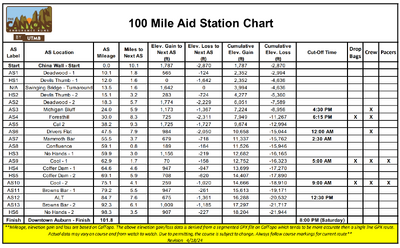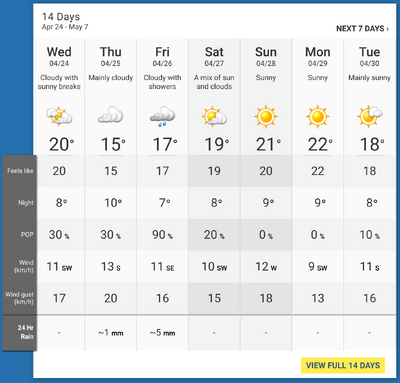Preparing for The Canyon 100M 2024
As I was preparing for my first 100 miler, The Canyons 100M, I wanted to make sure that I had a race plan sorted so all, or most of, the logistic would have been thought of before the race, and on race day I would only need to deliver.
In the weeks leading to the event, I spent a fair amount of time working and iterating on this plan… probably more time than should have been needed, so I am hoping to take advantage of this first experience for the next events to come and be more efficient.
My long distance trail background
To give some context of where I was coming from, my experience with Ultra trails so far had been a non-sanctionned 40-miler, GGTC 50k 2022, and QSER 100k 2023.
Stepping up to 100M I knew that I would need to spend a whole night out and wanted to make sure I was well prepared for that.
The course
The course was a 100M starting from China Wall at 9am on April 25 2024, and going down to Auburn. A total of 18,000ft elevation gain, 22,000ft elevation loss with 2 drop bags location (location 1 at 30 miles, location 2 at 63 and 75 miles), and 5 crew access points (drop bags location + 2 other AS).

Rain was an option, and temperatures were going to be between 7C and 17C (44F to 63F) so I wanted to make sure I had the right equipment to not freeze out there and spent some miserable time on the course, while at the same time not wanted to mule stuff for 100M for no good reasons.

Some of the minimally required equipment included a running pack, 1 liter of fluid capacity, headlamps, and a hooded jacket.
Rough planning
I started drafting up a plan where I would take advantage of the drop bags. My wife was going to crew me, but I wanted to make sure that if anything happenned with her ability to get to the AS I could be minimally self-sustained with drop bags, so those were going to be my main equipment storages.
Drop bags
With drop bags at miles 30 and 60 that was perfect to store changes of shoes and clothes to be able to get something dry and clean at the 1/3 and 2/3 checkpoints. Shoes change would help with preventing blisters in case of river crossing, and also it would be a perfect time to re-apply some anti-chaffing.
Aid stations would provide fuel and hydration. Naak was their sponsor and I had tried their product to make sure I could handle it, regardless, I would take the opportunity of “diversifying” my fueling and hydration by taking some of my favorite from my personal stash.
A rough estimate indicated that Forest hill (drop bag location #1), would be reached before night time, and that I would need to prepare for the night there. Cool-1, location #2, would be right in the middle of the night and gear for cooler temperatures may be appreciated there.
Crew bag
The crew bag would be used for 3 purposes:
- pre-packed fuel that I should need from a crew only aid station to the next aid station. This was giving me more opportunities to get my own fuel if I wanted some change from aid station fuel.
- backup gears in case a drop bag did not make it to destination… things happen.
- extra storage for nice-to-have equipment, but not critical gear. By not having them in my main drop bags, it would remove clutter from those and make it easy to go in-and-out of the aid station and focus on the more critical parts.
Race plan
I wanted to be able to minimize the amount of manual work I was going to put in building a spreadsheet for the race as I knew that if I needed to change pace estimate… it will all go wrong.
Searching the web, I found a few templates, but eventually found a youtube video showing how they built theirs, which seems to have been the base for the SDW 100 2023. A template would have been more handy, but the time watching this video was actually really useful and informative and I started creating my own spreadsheet based on those ideas.
I highly recommend that you watch the video to better understand how that works, but the TL;DR is that the first sheet (called Data) has all the data that matters. This sheet is built quite manually, but then is used to populate the other sheets which are subsets of the information extracted from the data sheet.
I established linear ETA for paces of 24-hour goal (My A-goal), 16 minutes/mile (which I found realistic if I could not meet the 14:30 minutes/mile required for A-goal), 18 minutes/mile (just in case things go bad), and pace to meet cut-offs.
In order to easily visualize when night time would start, I used conditional cell formatting on those ETAs to darken the cell for night times. This made it clear that Forest Hill was where I needed to prepare for the night, and if I was maintaining a 24h-goal pace, I could possibly right Drivers Flat still during day-time.
So far, those paces were linear, which is not super realistic. Just judging by the elevation gain/loss of a segment is not super helpful either as a steep/technical down is not something that one can run fast on as opposed to a less steep smooth trail. I did not want to get into too much effort to get perfect split times, but eventually discovered ultraPacer website were I could create a plan for Canyons 100M 2024 with a goal of 24h, and latter used this as my main reference point.
Refining my race plan
Now that I had a decent estimate of the times at which I would reach the AS with drop bags or crew, I could iterate and refine my race plan.
Fueling
I knew roughly how long it would take between aid stations, so I could estimate how much fluid/calories I wanted to consume and wrote that in its own column.
Bags
I knew that I would need to prepare for the night at Forest Hill, that I would reach Cool-1 right in the middle of the night and that things may get colder then, so possibly I would need warmer gear.
For fuel/hydration, I would take every opportunities to change from AS provided one by pre-packing AS specific ziplock bags with what I would need to put in my vest.
I was not sure how long my watch (Fenix 7), my headlamps could stay up without needing to be recharged, so I packed some battery packs in each drop bags, along with the different cables needed (too many different connectors!).
This is also the stage when I finalized on using the crew bag for backup and extra goodies.
AS action items
During my previous 100k race, I had learned a hard lesson… chaffing in the groin area was very painful and could have killed my race if I had to run longer… so this time I wanted to make sure I applied generous amount of anti-chaffing cream regularly.
I also wanted to make sure that I did not forget anything important when getting to the drop bags so I wrote down what to do there. In retrospect, I was able to do without looking at the document because my dropbag contained exactly what I needed to take/use for the next step. Regardless, I still think it is worth writing this down for reference (and helping prepare the drop bags).
For the crew, I also added a few action items that could help speed up time at the aid station, like pre-mixing tailwind so I only need to transfer it to my soft flask.
Useful resources
Here is a far from exhaustive list of links I have found useful, but they are the ones that help me finalize my plan.